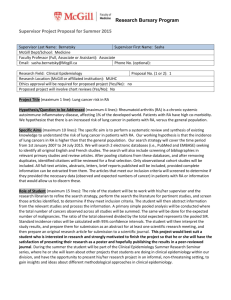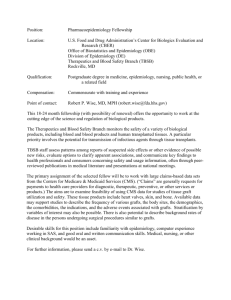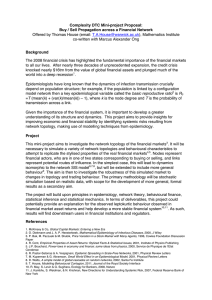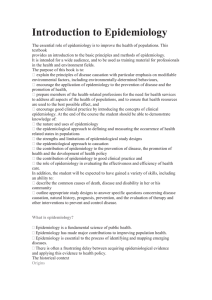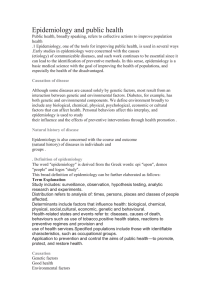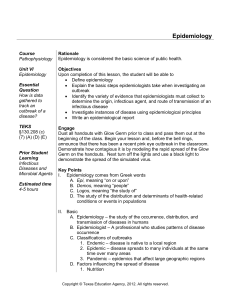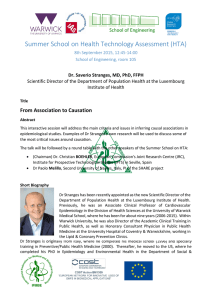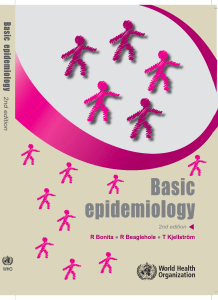Document 12730245
advertisement
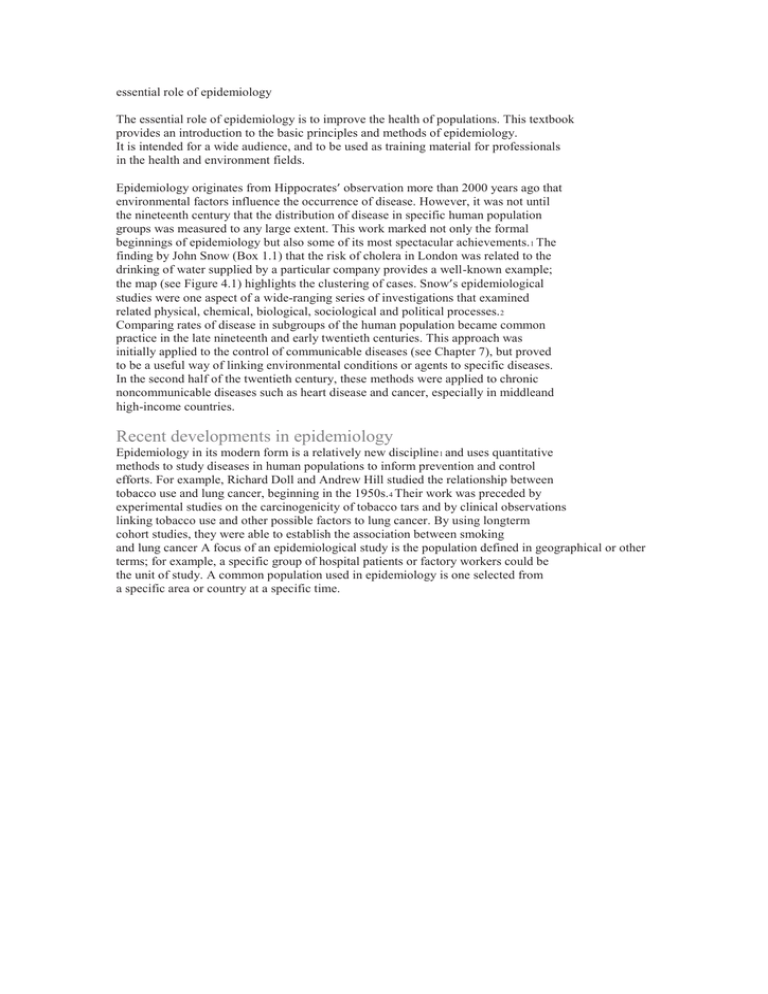
essential role of epidemiology The essential role of epidemiology is to improve the health of populations. This textbook provides an introduction to the basic principles and methods of epidemiology. It is intended for a wide audience, and to be used as training material for professionals in the health and environment fields. Epidemiology originates from Hippocrates’ observation more than 2000 years ago that environmental factors influence the occurrence of disease. However, it was not until the nineteenth century that the distribution of disease in specific human population groups was measured to any large extent. This work marked not only the formal beginnings of epidemiology but also some of its most spectacular achievements. 1 The finding by John Snow (Box 1.1) that the risk of cholera in London was related to the drinking of water supplied by a particular company provides a well-known example; the map (see Figure 4.1) highlights the clustering of cases. Snow’s epidemiological studies were one aspect of a wide-ranging series of investigations that examined related physical, chemical, biological, sociological and political processes. 2 Comparing rates of disease in subgroups of the human population became common practice in the late nineteenth and early twentieth centuries. This approach was initially applied to the control of communicable diseases (see Chapter 7), but proved to be a useful way of linking environmental conditions or agents to specific diseases. In the second half of the twentieth century, these methods were applied to chronic noncommunicable diseases such as heart disease and cancer, especially in middleand high-income countries. Recent developments in epidemiology Epidemiology in its modern form is a relatively new discipline 1 and uses quantitative methods to study diseases in human populations to inform prevention and control efforts. For example, Richard Doll and Andrew Hill studied the relationship between tobacco use and lung cancer, beginning in the 1950s. 4 Their work was preceded by experimental studies on the carcinogenicity of tobacco tars and by clinical observations linking tobacco use and other possible factors to lung cancer. By using longterm cohort studies, they were able to establish the association between smoking and lung cancer A focus of an epidemiological study is the population defined in geographical or other terms; for example, a specific group of hospital patients or factory workers could be the unit of study. A common population used in epidemiology is one selected from a specific area or country at a specific time.




